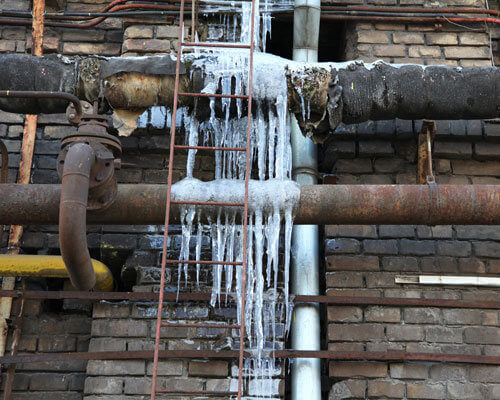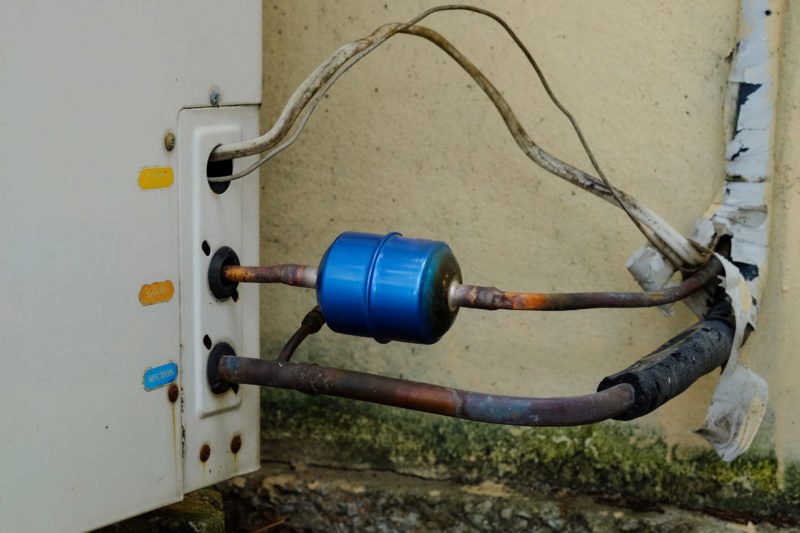Actions to Take If My AC Pipe Is Frozen - Quick Solutions for Unfreezing
Actions to Take If My AC Pipe Is Frozen - Quick Solutions for Unfreezing
Blog Article
This post following next in relation to Have a Frozen AC Line? Here’s How to Fix It is relatively attention-grabbing. Read on and draw your own personal assumptions.

Introduction
Finding that your air conditioner pipeline is frozen can be concerning, especially during hot summertime when you rely upon your air conditioning system one of the most. Recognizing what to do in such a scenario is vital to stop additional damage to your cooling system and ensure your comfort indoors.
Recognizing the Causes
A number of variables can add to the freezing of an AC pipeline. Comprehending these reasons can assist you deal with the concern successfully.
Lack of Airflow
One usual root cause of an icy a/c pipeline is inadequate air flow. When the air movement over the evaporator coil is restricted, it can create the coil to drop below freezing temperature, bring about ice formation on the pipeline.
Low Refrigerant Levels
Not enough refrigerant levels in your a/c system can additionally result in a frozen pipeline. Reduced cooling agent levels can create the pressure in the system to drop, leading to the cold of moisture on the evaporator coil.
Winter Conditions
In cooler climates, freezing temperature levels outside can add to the cold of AC pipes. If your air conditioning system is not appropriately protected or if there are leakages in the ductwork, chilly air can infiltrate the system, causing the pipeline to ice up.
Dirty Air Filters
Filthy or clogged air filters can limit air movement in your a/c system, resulting in various concerns, consisting of an icy pipeline. It's necessary to replace or cleanse your air filters routinely to ensure appropriate airflow and avoid ice build-up.
Indications of a Frozen Air Conditioner Pipe
Acknowledging the indicators of a frozen air conditioner pipe is vital for prompt action.
Lowered Airflow
If you notice a considerable decline in air movement from your vents, it might show a frozen pipe.
Ice Buildup on the Pipe
Visible ice accumulation on the cooling agent line or the evaporator coil is a clear sign of an icy AC pipe.
Odd Sounds from the Unit
Uncommon sounds, such as hissing or bubbling, originating from your air conditioner unit can signify that there's ice existing on the pipe.
Immediate Actions to Take
When faced with a frozen a/c pipeline, it's vital to act promptly to prevent further damage to your cooling system.
Turning off the a/c
The very first step is to switch off your ac system to prevent the system from running and exacerbating the issue.
Checking for Blockages
Evaluate the area around the indoor device for any kind of blockages that may be blocking air flow, such as furnishings or drapes.
Thawing the Pipe
You can make use of gentle approaches like placing towels soaked in warm water around the frozen pipe to aid thaw it gradually.
Safety nets
Taking preventive measures can help stay clear of future incidents of a frozen a/c pipeline.
When DIY Methods Fail
If your efforts to thaw the pipeline or address other issues are not successful, it's time to call in a specialist.
Value of Hiring a Professional HVAC Technician
A licensed HVAC technician has the proficiency and devices essential to identify and repair concerns with your air conditioning system securely and successfully.
Regular Maintenance Checks
Arrange regular maintenance checks with an expert HVAC service technician to ensure that your air conditioning system is running successfully.
Transforming Air Filters
Regularly replace or clean your air filters to prevent air movement constraints and keep optimal performance.
Insulating Exposed Pipes
If your air conditioner pipes are subjected to cool temperatures, take into consideration insulating them to prevent cold throughout winter months.
Seeking Professional Help
If DIY techniques fall short to deal with the problem or if you're unclear about exactly how to proceed, it's finest to look for aid from a qualified HVAC specialist.
Final thought
Taking care of an icy air conditioner pipeline can be a frustrating experience, yet recognizing just how to react can aid decrease damages and bring back convenience to your home. By understanding the reasons, acknowledging the signs, and taking punctual activity, you can successfully deal with the issue and protect against future incidents.
What to Do If Your AC Line Is Frozen
Make Sure All Supply and Return Air Vents Are Open
If you notice problems with airflow, the first thing you should do is check your supply and return vents. Supply vents distribute clean, conditioned air throughout your home. As this air becomes stale, it’s pulled into the return vent, where it’s reconditioned before being sent back out through the supply vent.
When these vents are closed, air won’t flow in the home. Before examining your AC, check the vents in every room and ensure they’re all open.
Check for a Dirty Air Filter
Another possible cause of limited airflow is a dirty air filter. Your air conditioner’s filters catch elements you don’t want to breathe in, such as dirt and dust. Over time, filters can become clogged, ultimately blocking air from flowing in and out. The lack of airflow can then cause the entire coil to freeze and will completely restrict any air from moving through it. The AC may need to be powered off for one to two days to allow the coil to thaw after replacing the filter to allow proper functioning of the unit. This debris can also accumulate on your AC’s evaporator coil, requiring a more serious repair. In general, air filters should be cleaned regularly (about every two weeks).
Assess Your Outdoor Unit
In addition to checking your AC, assessing the outdoor unit is a good idea. Also known as the condensing unit, it works with your interior unit to release heat outside. An issue with the outdoor unit can result in rising internal temperatures.
Overgrown Shrubs or Clogged Leaves
From leaves and twigs to shrubs and debris, there’s no shortage of outdoor elements that can accumulate around your condensing unit. When these elements get lodged inside the unit, they can block airflow. Fortunately, removing the blockage can solve the problem.
Sounds of a Broken Fan
Shrubs and leaves aren’t the only things that can impede your outdoor unit’s airflow. If the fan is broken, the unit won’t be able to properly get rid of heat — which means the internal temperature won’t go down. First, make sure the fan is spinning. If it is, check for the following sounds of a broken fan:
Buzzing Rattling Screeching Hissing Clicking Preventative Measures
Nobody wants to deal with a frozen AC line. In addition to causing problems with your air conditioner, they require professional repairs. On the bright side, there are preventative measures you can take to help ensure this issue doesn’t arise in the first place.
https://www.coopergreenteam.com/blog/what-to-do-if-ac-line-frozen

I was shown that editorial about Air Conditioner Frozen? How To Fix your Frozen AC Line from someone on a different web property. Be sure to take the opportunity to promote this page if you liked it. Many thanks for your time. Please come by our site back soon.
Call Today Report this page